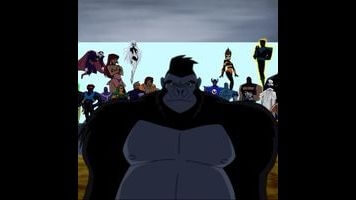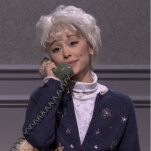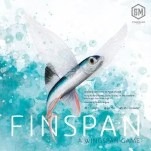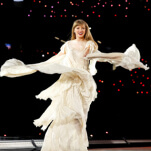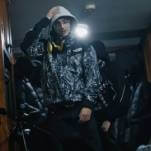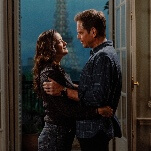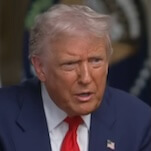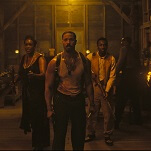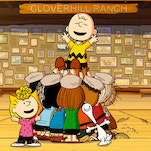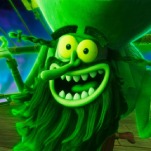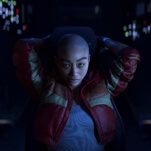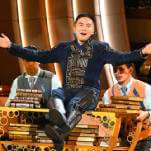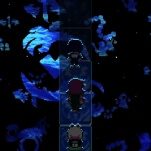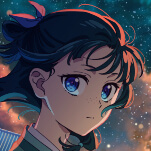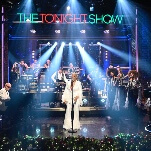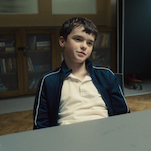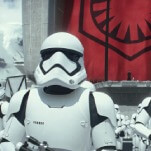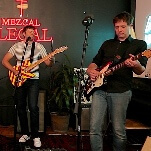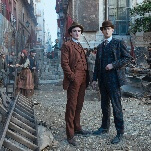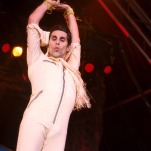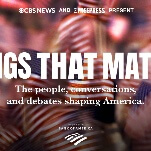Coming off of an incredibly progressive superhero story in Justice League Unlimited season two, the third and final season premiere of the series turns to the past for inspiration. “I Am Legion” replaces political allegory with pulp adventure as it sets up the Justice League’s villainous counterpart, The Legion Of Doom, which is itself a concept pulled from one of the superhero team’s previous forays into the world of animation.
As a kid, Cartoon Network reruns of Challenge Of The Super Friends introduced me to a lot of DC characters that I hadn’t been familiar with, providing me with the basic knowledge needed to dive into comic-book stories featuring these heroes and villains. That series was similar to JLU in that it took what had been built in the previous All-New Super Friends Hour and expanded on it, adding more heroes (and diversity) to the team while also incorporating a larger number of villains, giving lesser-known characters like Solomon Grundy, Black Manta, Captain Cold, and Gorilla Grodd considerable exposure by putting them on television.
That series showed me the variety of the DC universe, just as JLU did for the kids that caught it when it first aired, but everything about JLU is bigger and better. There are more characters with better designs and voice actors, engaging in stories that have more depth and smoother animation. Whereas Challenge Of The Super Friends was tooled for a child audience, JLU is an all-ages series that appeals to both young newcomers meeting these characters for the first time as well as adult fans that are eager to see their favorite heroes and villains brought to the screen.
The previous DCAU series set a high standard of quality that made it possible for adults to engage in these stories without feeling like their intelligence was being insulted, and the writers of JLU played to that older audience by emphasizing more mature story elements last season. That provides a level of substance that makes JLU season two one of the greatest arcs in superhero cartoons, but rather than trying to replicate that success, the writers move in a different direction for the series’ final 13 episodes.
Writer and executive producer Dwayne McDuffie has a clear affinity for the expansive history of the DC Universe, and the third season of JLU gives him the opportunity to explore different facets of this world with the rest of the writing staff. For the first episode of the season, he embraces the DCU’s roots in the pulp adventure stories that were immensely popular during World War II, devoting most of “I Am Legion” to a mission on Blackhawk Island that plays out like a superhero chapter of the Indiana Jones saga.
But before the Blackhawk Island action, the episode introduces viewers to the new Legion Of Doom in spectacular fashion. After a daring prison escape, Lex Luthor is abducted by The Key and taken to a swamp where Gorilla Grodd has built a secret base for his Legion Of Doom, a reveal that spotlights the magnitude of this plan. As Grodd stands in front of his giant black headquarters, the front hatch lowers to reveal a huge line-up of supervillains, a visual that hits with the same kind of impact as the reveal of the newly expanded Justice League back in the very first episode of JLU. Except instead of inspiring the viewer with superhero might, it creates an immediate sense of dread by showing just how big the threat is this season.
As a direct response to the League’s expansion, Grodd has assembled a secret collective of supervillains, offering the rogues protection in exchange for 25 percent of the take from their criminal activity. Under the guidance of J’onn, the League is too coordinated for villains to risk committing crimes on their own, but Grodd has given them a support system that allows them to continue their wrongdoing by working together. Grodd understands the value of Luthor’s genius, so he brings him into the fold, but the ape wants to make sure that the man knows exactly who is in control.
In this new villain landscape, Luthor is just a lackey, working for his boss in hopes that he’ll be given the last remaining piece of Brainiac and satisfy the voice living in his brain. One of the best things about the Grodd/Luthor conflict in JLU season three is that it gives voice actors Powers Boothe and Clancy Browne the opportunity to face-off on a regular basis. The two men have incredible range, but the timbre of their voices brings a certain aggression to all of their dialogue, always reminding the viewer that these are bad men, even when the script paints them in a more sympathetic light.
As Lex Luthor, The Key, and Dr. Polaris team up to retrieve a mystical artifact from the Blackhawks’ old base, the last living member of the WWII fighter pilot squadron contacts his old ally Hawkgirl (whom he met when the League traveled back in time) to get some Justice League assistance. Hawkgirl, Flash, and Fire head to Blackhawk Island, where their plane is ripped up by a giant metal condor, and once they’re on land, they come face-to-face with more retro obstacles like war wheels and flying metal sharks with machine guns for eyes. It’s all very silly, but that’s the point. Last season got so serious, but now the creative team is having more fun and being a bit more childish, reminding the audience that this is what superhero stories used to be like back in the day.
Director Joaquim Dos Santos delivers thrilling visuals that are heavily reminiscent of the Fleischer Superman shorts, especially the aerial action sequence when the League’s transport is destroyed. He does great work making Hawkgirl and Fire look like total badasses as they take down their giant metal bird opponents, and it’s notable that most of the action in this episode is focused on two women and an elderly male. The expanded cast of JLU gave the writers the opportunity to include more diversity, and this series shows that anyone can be a hero, regardless of sex, age, or race.
Romance is an essential factor in any superhero team—put a bunch of characters together, eventually some of them are going to start having feelings for each other— and incorporating the budding courtship of The Flash and Fire brings heart to an episode that leans heavy on the superhero action elements. Flash has a crush on Fire but is intimidated by her beauty (it doesn’t help that she’s basically naked when she flames on), and it’s a lot of fun to see the usually cocky Flash get all flustered by the presence of this strong, attractive woman.
But the Flash/Fire romance isn’t the most interesting relationship of “I Am Legion.” That honor goes to the bond between Lex and Brainiac, which has become surprisingly affectionate in the time they’ve spent together. Brainiac’s main reasoning for regaining the lost piece of himself is that it gives him and Lex the opportunity to be together again, interesting phrasing considering they’re more together than they’ll ever be as Brainiac currently inhabits Lex’s brain. But Brainiac is promising something more physical, and Luthor has no objections.
Ultimately, “I Am Legion” is all about embracing a classic superhero style. McDuffie isn’t trying to put a modern spin on old concepts, but is more interested in capturing the qualities that made those old concepts so beloved in the first place. The episode starts with a massive wave of supervillains dressed in gaudy, colorful costumes, and builds to an extended island action sequence that is very much intended to be a throwback to those pulpy Golden Age superhero comics.
The climax of the action on Blackhawk Island requires the League to choose between saving the Blackhawk base and all of its priceless artifacts or capturing Luthor, and they decide to save history rather than bringing in the bad guys. History is very important to superhero comics, something DC has forgotten in the New 52 relaunch, which erased things like the WWII Justice Society from continuity. That history is something to be preserved, not disposed of, and stories like “I Am Legion” show that the ideas of the past can be used to tell an exciting plot in the present.
Stray observations:
- Aztek has his second, and final, speaking appearance in this episode, serving as the League’s crime scene investigator when Luthor disappears after his prison break. As someone for whom Grant Morrison’s JLA is a formative DC Comic, I have a special place in my heart for Aztek, and I would have loved to see the character get more spotlight on this series.
- To help accentuate the retro feel, this episode also features a cameo by King Faraday, the silver fox secret agent that made his DC Comics debut in 1950. He’ll never be more than a small side character on JLU, which is a shame.
- We live in a world where Gorilla Grodd is going to be back on TV, in live action, thanks to The Flash. Let that sink in. Live-action Gorilla Grodd.
- One thing that sticks out to me in this episode is the color scheme of the group heroes. Each character has a dominant color—red (Flash), yellow (Hawkgirl), blue (Chuck), and green (Fire)—and those four shades are the foundation for most early superhero designs. It helps accentuate that classic feel.
- I love the transition from Chuck’s Blackhawk jacket to the eye of a hawk flying over Blackhawk Island. So smooth!
- “Yeah, you’d probably be wasting your time anyway. I hear she’s… you know… Brazilian.”
- Flash: “War wheels. Robot condors. You got a pretty goofy security system here.” Chuck: “Yeah… good times.”
- “Monkey, I like your style.”
